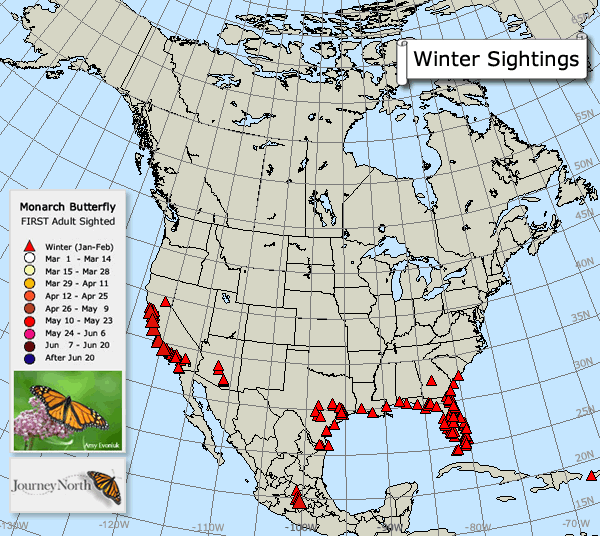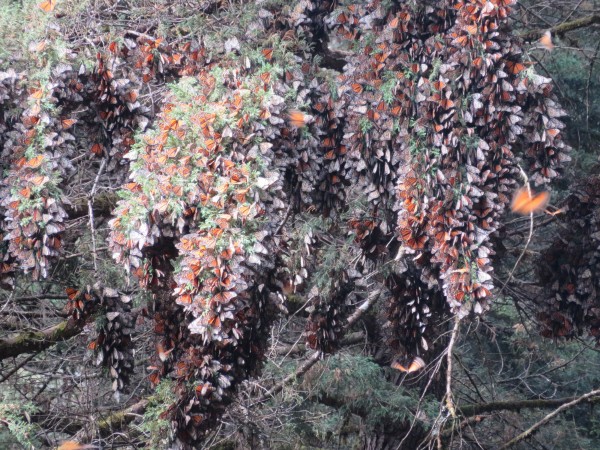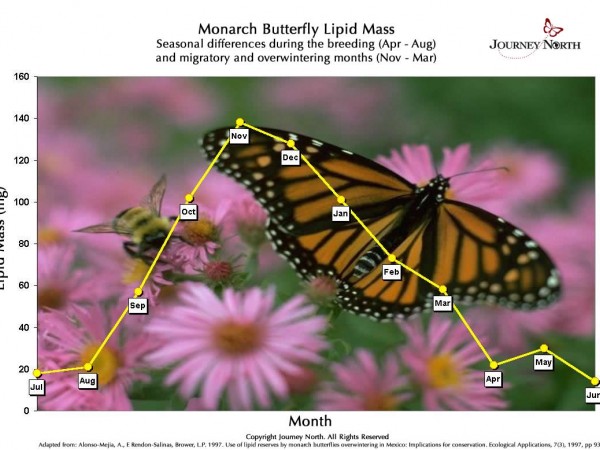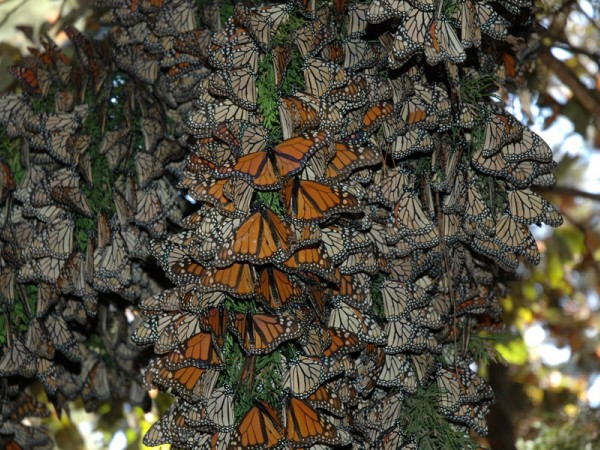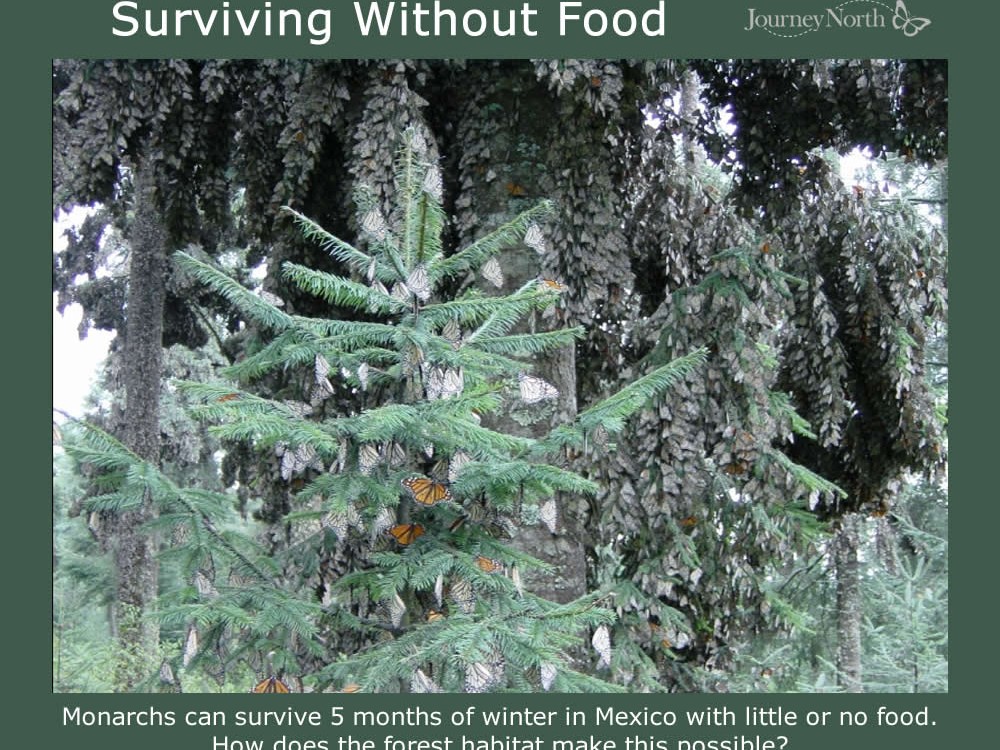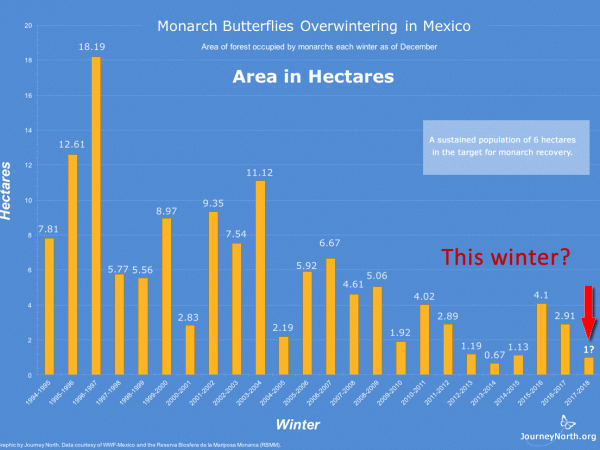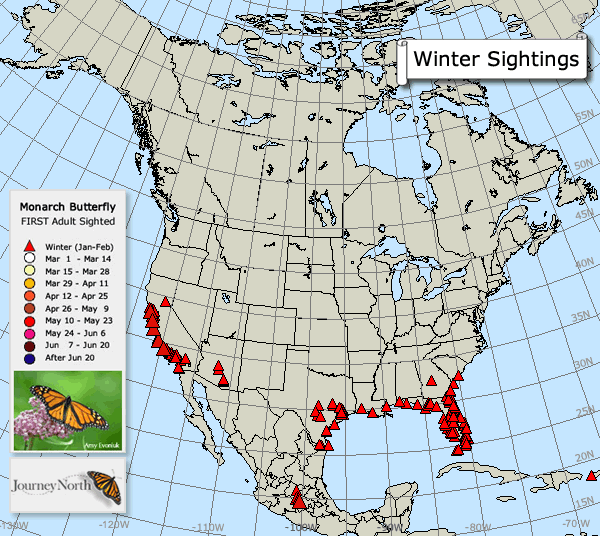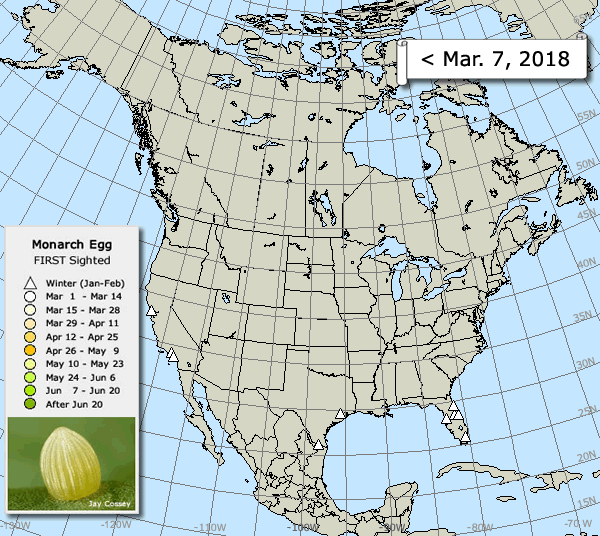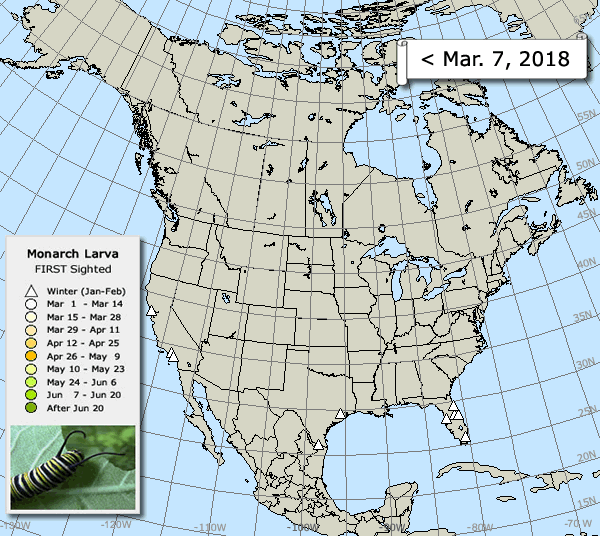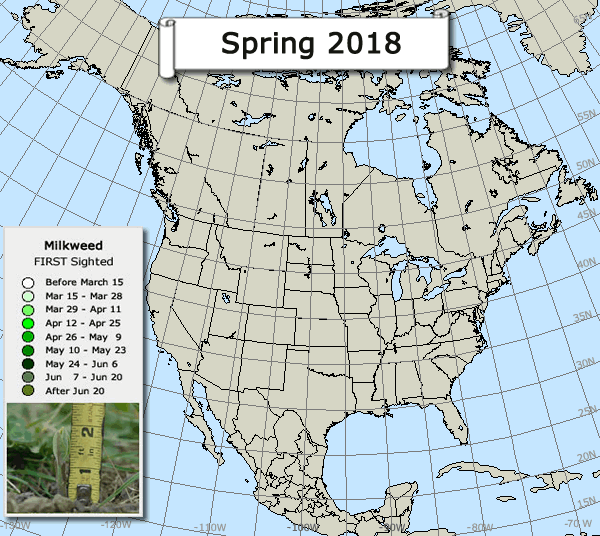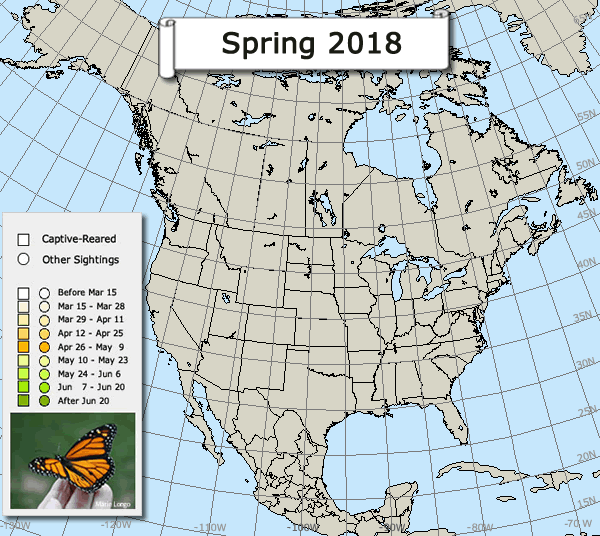Conserving Energy
This February's unusually cool temperatures at the sanctuaries may help Monarchs conserve their limited energy supplies.
Greetings from Cerro Pelón
Ellen Sharp lives near Cerro Pelón Sanctuary and shares her close-up perspective of the season so far:
"Ever since February hit, the weather has turned uncharacteristically grey and cloudy. On many days, the monarchs have stayed huddled in their clusters. Although visitors leave muttering about their bad luck, personally, we're a bit relieved.
"For most of November, December and January the weather was consistently clear and warm, and the monarchs took to the air in incredible orange spectacles almost every day. They poured down from their roosts on the slope of Cerro Pelón to fill the meadow called El Llano de Tres Gobernadores.
"It was a crowd pleaser; many of the videos that we posted of this spectacle went viral. But behind our visual pleasure lay a niggling worry about the relationship between these energetic expenditures, available nectar sources and the long-term viability of the migration." More...
Temperatures and Fat Reserves
Monarchs burn less energy when temperatures are cool. They arrive in Mexico with stored lipids. They can survive the winter without food by living off their fat reserves. This lipid graph shows how levels change during the overwintering months in Mexico. By late February, the butterflies' fat reserves are about half gone. If it's too warm during the winter, the butterflies can burn their stored fat too quickly.
The secret behind the monarch's survival without food is the cool habitat it chooses in Mexico. "Cool temperatures in the forest slow down the monarchs' metabolism so they can stay alive longer," says Dr. Karen Oberhauser.
Spring Migration 2018
Report all monarchs you see — adults, eggs, larvae.



